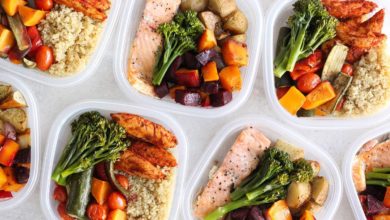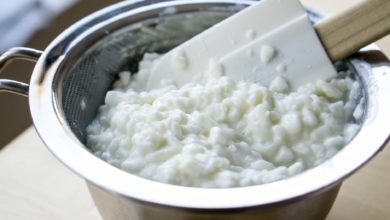Ricotta vs Cottage Cheese – What are the Differences? Which is best for what?
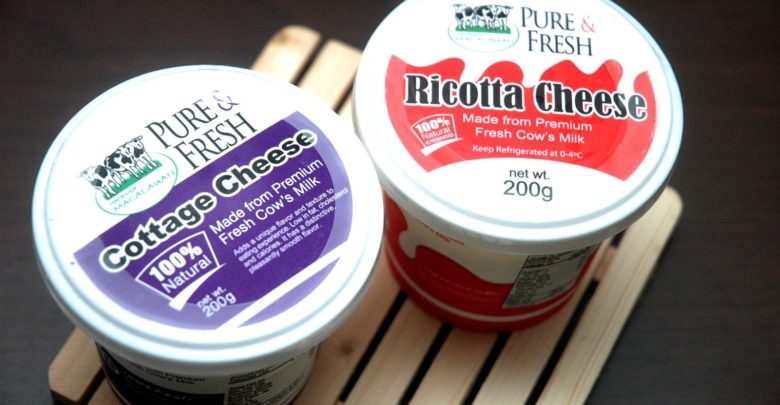
Despite being one of the healthiest dairy-derived products out there, cottage cheese often gets a bad rap for an unpleasant smell and having an odd texture.
Yet, people gorge on Ricotta cheese, which is pretty close to it in terms of both, taste and nutritional value.
Why then does cottage cheese get maligned unfairly?
Well, it’s mostly done by people who have never tasted it. They just jump to assumptions based on what they might have heard or read on the internet.
Others may have tasted a ‘type’ of cottage cheese that isn’t too gentle on newbie taste buds.
Oh yes, there are some varieties that are more palatable than others. If you got off on the wrong foot, then you may develop an averseness for the taste.
The fact is that fresh cottage cheese tastes delicious.
Well, that’s subjective. But it definitely does not taste bad.
What’s more important is that you can use cottage cheese and ricotta cheese interchangeably in most of your recipes.
Both are fresh, unaged cheeses that are extremely versatile.
Today we will talk about both these cheeses and we’ll also share with you ways in which you can mask the ‘unpleasantness’ in cottage cheese.
What is Ricotta Cheese & How Is It Made?
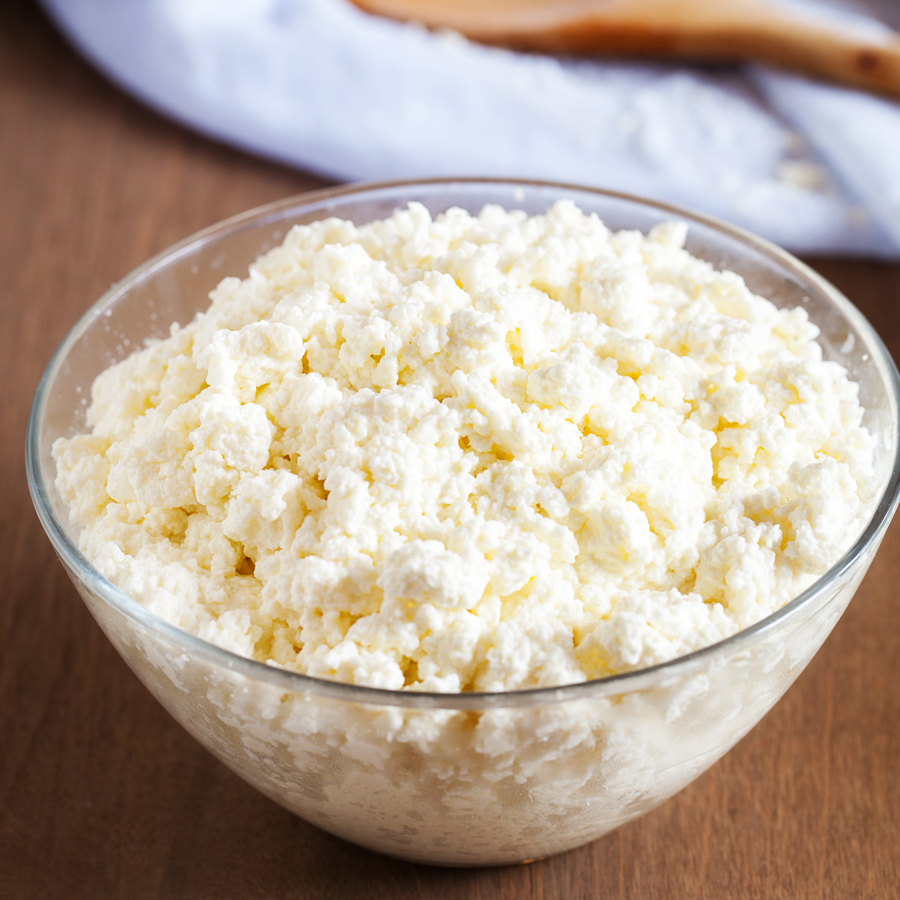
Ricotta is a traditional Italian, fresh, whey cheese that has caught the fancy of the western world.
Its light, fluffy, creamy texture has made it a breakfast staple and a mid-day snack too.
Irrespective of whether you are a ricotta gorger or you only indulge on weekends, you’d be surprised to know that the version of store-bought Ricotta that you may be eating is not authentic.
Authentic Italian Ricotta is made from the whey left behind, after making different types of hard cheese.
For example, a cheese maker may use goat, sheep or Water buffalo milk to make cheese.
Once the solid curds are separated to make, say Romano cheese, the leftover whey with the tiniest bit of curd is repurposed to make Ricotta.
The word “Ricotta” in Italian means Recooked.
Typically, vinegar or some type of citrus juice is added to this whey to allow milk curds to coagulate further. When the curds become large, the acid is strained and Ricotta is left behind.
In the United States however, Ricotta is made from whole cow milk instead of whey (Not goat or water buffalo milk).
Whole milk or Skim milk is added to the leftover whey before it is coagulated again.
Hence, the Ricotta that we generally eat has a fresher, creamier texture as compared to authentic Italian Ricotta.
What is Cottage Cheese? How Is It Made?

Cottage cheese is also a fresh, whey cheese that can be extracted from whole, skim, low fat as well as no-fat milk.
It is made by coagulating the milk, separating the curds and allowing the whey to drain completely or partially.
The leftover curd, which is lumpy and has a coarse texture is the cottage cheese. It may be pressed or processed further to help improve the way cottage cheese taste and the texture of it.
Many brands for example, add cream and whole milk to the final product to make it creamier and spreadable.
Sodium may also be added to the milk during the coagulation process.
Ricotta Vs Cottage Cheese – How Do They Compare? What are the Differences?
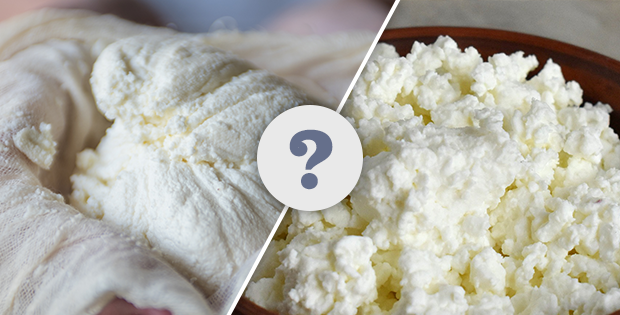
At first glance, both these fresh varieties of cheese look identical.
Both are lumpy, pale in color and have a mild flavor because they aren’t aged.
Except for Salata, which is a salted version of Ricotta that is aged for 3-months and has a feta-like taste and flavor.
But there are some key differences in the taste, the texture and the best usage of cottage cheese and Ricotta.
Taste
Ricotta is a sweet tasting cheese that has a very neutral flavor. This allows you to add it to both sweet and savory dishes. The texture can vary greatly from slightly coarse to extremely smooth depending on whether it’s a low-fat type or a full-fat variety.
Cottage cheese on the other hand has a slight sour taste with a mild flavor. Unlike Ricotta that is made from whey and has a lot of moisture, Cottage cheese is made from the curds which gives it a distinct lumpy texture that is either loved or hated.
There are a lot of recipes where the two can be used interchangeably. Lasagna, stuffed recipes and meatballs for example.
But cottage cheese is mostly preferred by fitness buffs and weight watchers who like to reduce a few calories and increase the protein content in these recipes. Someone who’s bothered more about the taste and texture would stick to Ricotta.
Which Tastes Better, Ricotta vs Cottage Cheese?
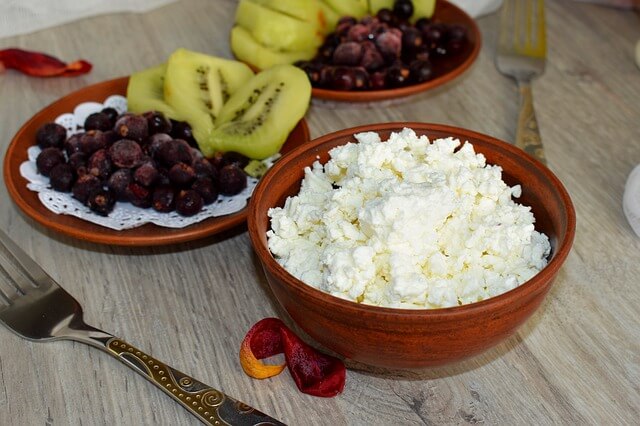
We can tell you that both taste equally good and that taste is subjective and a matter of preferences.
But we’d be lying if we did that.
Ricotta cheese tastes better any day.
Like we said earlier, it is made by adding whole milk to the leftover whey which makes Ricotta a wet cheese with tons of moisture. This gives it the creamy texture that allows you to use it in fillings, as a spread on toast and so on.
Since fresh milk and sometimes, whole cream is added to it before the coagulation process, it does not have the sour taste of cottage cheese.
It has a neutral flavor.
In comparison, cottage cheese has an acquired taste that you may either love or hate.
Low fat varieties of cottage cheese have the distinct lumps and a slightly dry texture that cannot be spread as easily. For this reason, it is best eaten by itself.
The only way to improve the taste is to blend it or whip it up in a blender, with some full cream milk or with some Greek Yoghurt depending on what taste you prefer more.
Nutrition: Ricotta vs Cottage Cheese
So between the two how does the nutrition of each compare? Is one healthier than the other, does one have more carbs than the other?

Which has more carbs? Ricotta or cottage cheese?
There is only a marginal difference in the carbohydrate content in both Ricotta and Cottage Cheese, which makes both these fresh cheeses an ideal choice for someone on a low carb diet.
However, cottage cheese holds a slight edge in the nutritional profile.
A 1-cup serving of full cream Ricotta for example, contains 16 grams of carbohydrates.
In comparison, a 1-cup serving of full-fat cottage cheese contains only around 7-grams of carbohydrates.
If you are on a Keto diet, cottage cheese is a much better option than Ricotta.
Which Has Better Nutrition? Ricotta or Cottage Cheese?
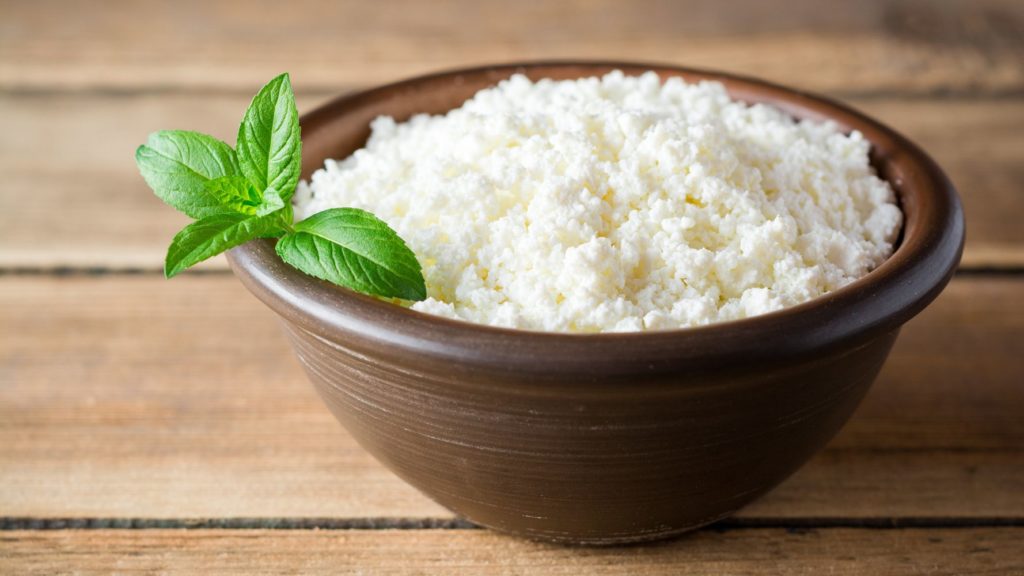
Well, that depends on what your nutritional goals are.
Here’s a comparison between the two.
A 1-cup serving of full-fat Ricotta cheese gives you approximately 400-calories with 24-grams of protein, 24-grams of fat, 600mg of Sodium and almost 40% of your RDI of calcium.
In comparison, a 1-cup serving of full-fat cottage cheese has just 240-calories with 24-grams of protein, 14-grams of fat, 700mg of sodium and 20% of your RDI of calcium.
Related Readings: Best Low Sodium Protein Powder Mixes
These are just ballpark numbers mind you. But it can be used as a reference point for your research.
As you see, cottage cheese is low in calories and fat content. It is slightly higher than Ricotta cheese in terms of sodium. But there are low and no-sodium varieties of cottage cheese which can be used instead of the full-fat one.
Ricotta cheese, while offering the same amount of protein is crammed with saturated fat and almost an equal quantity of sodium. Not to mention that one cup is about 400 calories. So, we’d reserve it for the occasional indulgence and swap it with cottage cheese whenever possible.
Can you eat Ricotta Cheese by itself?

Absolutely. Full fat Ricotta tastes delicious when eaten by itself without cooking it.
Just add it to a bowl, top it with some sea salt, freshly ground pepper and eat it like a mid-day snack.
Oh, add some olive oil if you wish to do it like the Italians do.
You can even add it on slivers of fruit, top it with honey and some cinnamon.
Add it to scrambled eggs to increase the calcium, protein and fat content of your breakfast.
Mix it with cream cheese, some sugar, a teaspoon of vanilla extracts and top it with chocolate chips. You have just made the most insanely delicious cannoli dip.
There are of course, many other ways to enjoy Ricotta cheese.
I’m Tracking My Carb Intake; Should I Choose Cream Cheese over Ricotta?
![]() Now if you’re keen on your carb intake, you could be stuck on which version to go for, the full-fat varieties or the low-fat versions. Do not be deceived to thinking that the low-fat version of any makes for a lower carb option, actually, the opposite is the case.
Now if you’re keen on your carb intake, you could be stuck on which version to go for, the full-fat varieties or the low-fat versions. Do not be deceived to thinking that the low-fat version of any makes for a lower carb option, actually, the opposite is the case.
According to US Department of Agriculture (USDA) stats; 1 ounce of ricotta cheese made from whole milk contains 0.9 grams of carbohydrates, while a similar serving of cream cheese contains 1.2g of carbs.
On the other hand, 1 ounce of low-fat cream cheese contains 2.3 grams of carbohydrates, compared to the lower 1.5g cabs in 1 ounce of ricotta cheese made from skim milk.
These stats put the carb count higher on the low-fat versions of both cheese, while the carbs on full-fat varieties are actually lower. For those keeping their carb intake in check, I’d suggest that you stick to ricotta cheese, and more so the full-fat variety.
Picture this, with a cup serving of the full-cream ricotta, you will get 16 grams of carbs, while with full-fat cottage cheese, a similar size serving contains half of that amount at 7g of carbs. This places cottage cheese high on the list if carb count is a big factor for you.
However, make sure to be keen on the nutritional facts label when scouting for the cheese that meets your carb count per serving. All the information you need should be labeled clearly to help you settle for the best pick.
The Final Verdict: Should you use Ricotta or Cottage Cheese
It’s a very close call.
If you are watching your calorie intake or looking to reduce your dietary cholesterol intake, then cottage cheese is a slightly better choice. It is high in casein protein which prevents muscle breakdown. Adding it to your dinner might be an easy, cost-effective way to include casein in your diet.
On the other hand, if you just cannot wrap your head around the taste and texture of cottage cheese, go for ricotta by all means. We’d still limit the intake especially if saturated fat is a concern.
Related Readings:
- Review Of Ka’chava’s Meal Replacement
- Best Protein Powder For Sensitive Stomachs
- Huel Vs Soylent, Which is Better?
- Best Protein Powder For Mixing with Smoothies
- Shakeology VS Shaklee: The Meal Replacement Showdown (2022)
Ben Mayz
Hi there! I'm Ben, main author and chief editor at Fitlifefanatics.com. I have been obsessed with Strength Training and Fitness for 18 years now.
My passion for living a happy fit lifestyle is what made me realize that fitness is what I wanted for my future.
I went on to earn my Masters in Sports Training & Biomechanics.
My passion for Strength training & fitness and my love of helping others is what made me start Fitlifefanatics.
Here, myself, and a team of specialist aim to provide the most accurate, and actionable information possible in hopes to help foster the fitness community forward.
You can learn more about Fitlifefanatics on our About Page








